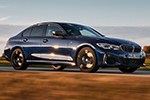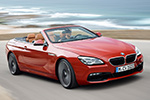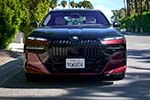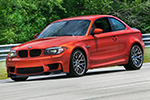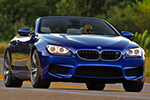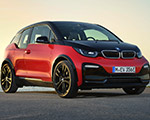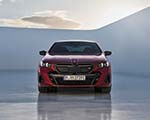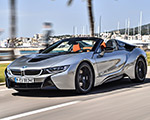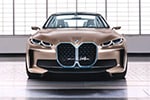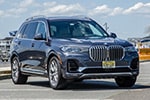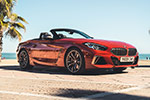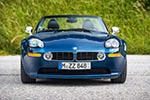Since we have our long-term tester, the 2025 BMW M5 (G90), on hand, we decided it was the perfect opportunity to perform an electric range test—also known as hypermiling—to see just how many miles we could extract from each recharge. With BMW M stepping boldly into electrification, the latest M5 combines a powerful twin-turbo V8 engine with a potent electric motor, blending traditional performance with modern efficiency.
First Plug-in Hybrid BMW M5
The heart of the new M5 is the twin-turbocharged 4.4-liter “S68” V8, specifically designated S68B44T0, churning out an impressive 577 horsepower and 553 lb-ft (750 Nm) of torque. Peak torque arrives early, at just 1,800 rpm, and holds strong until 5,400 rpm, delivering the engine’s full 577 horsepower between 5,600 and 6,500 rpm. And if you’re wondering how high it revs, BMW set the redline at a thrilling 7,200 rpm.
Complementing this combustion powerhouse is an electric motor neatly integrated into the eight-speed automatic transmission. By itself, this e-motor generates 194 horsepower and 207 lb-ft (280 Nm) of instantaneous torque. Electricity comes from a lithium-ion battery pack strategically placed in the underbody, preserving interior space and optimizing weight distribution. Interestingly, the battery’s net energy capacity varies depending on market regulations: globally, the battery offers 18.6 kWh, but in the United States, regulatory constraints limit usable capacity to just 14.8 kWh.
Given the car’s performance credentials—717 horsepower and 738 lb-ft (1,000 Nm) total system output—our interest was piqued by its purely electric capabilities. Official figures peg the M5’s electric range at 25 miles according to the EPA or about 65 kilometers on the WLTP cycle. However, real-world scenarios can sometimes yield surprising results, so we were eager to test this firsthand.
Electric Range Test
For our electric range test, the methodology was straightforward. We began by fully charging the battery using a Level 2 charging station, with the dashboard showing an optimistic 33 miles of available EV range. Conditions during our test were mild, with outdoor temperatures ranging between 55°F and 60°F—typical spring weather in Chicago.
Our route was designed to reflect realistic driving conditions, combining urban traffic jams, steady city cruising, and highway driving. We deliberately avoided extremes: no hyper-aggressive braking regeneration and no artificially slow speeds. Brake regeneration was set to “Max” in the drivetrain settings, but driving habits were kept as natural as possible, with speeds capped around 65 mph—a practical compromise for typical highway traffic around Chicago.
Before embarking on our journey, we reset the M5’s trip computer for accuracy. During the test, the M5 performed comfortably in electric mode, though the car notably limits pure-electric top speed to 87 mph (140 km/h). This limitation wasn’t an issue, given our normal driving conditions.
20% More Range Than the EPA Rating
At the conclusion of our real-world EV range test, the BMW M5 far exceeded official expectations, delivering a remarkable nearly 40 miles of purely electric driving—15 miles more than the EPA’s rating. An interesting observation occurred as the battery’s range dwindled: when only one mile of EV range remained, the M5’s hybrid system proactively engaged the gasoline engine to preserve battery health and maintain optimal state-of-charge.
In the end, our hypermiling experiment demonstrated the new BMW M5’s impressive dual nature: impressive performance when you want it, and substantial efficiency when driven mindfully.






















